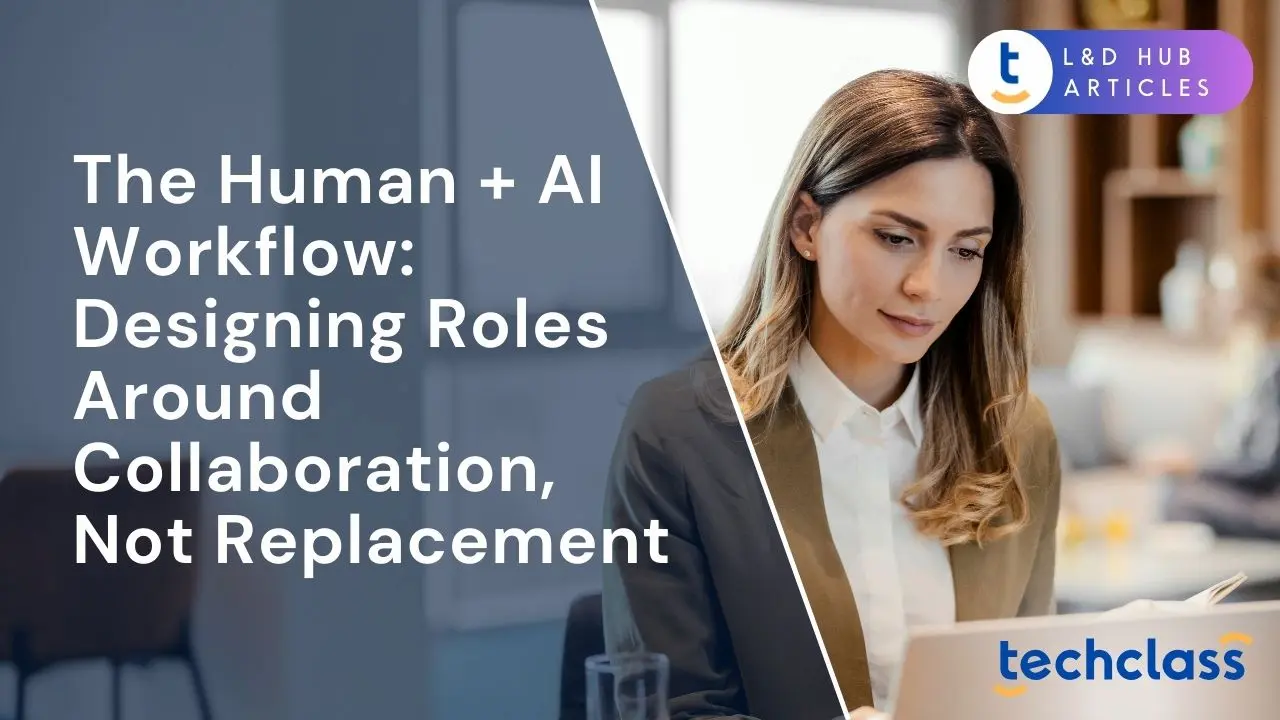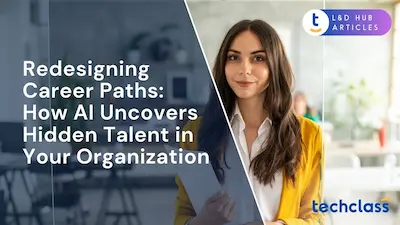
In boardrooms and breakrooms alike, a question looms: Will AI replace human jobs, or empower them? As artificial intelligence rapidly permeates the workplace, early fears of an all-automated workforce are giving way to a new reality, one where humans and AI work side by side. Organizations at the forefront are discovering that when employees team up with intelligent machines, the results can surpass what either could achieve alone. In fact, companies that deploy AI to augment human workers (rather than to fully automate tasks) have been found to outperform those pursuing automation-only by a factor of three. This synergy comes from leveraging each side’s strengths: AI’s speed and data-crunching power amplify human creativity, judgment, and empathy. The shift underway is not about replacing people with algorithms; it’s about redesigning roles and workflows so that human talent and AI technology collaborate seamlessly. Business leaders, HR professionals, and CISOs are now challenged to rethink job design, training, and culture around this human+AI partnership. The following sections explore why collaborative intelligence is emerging as the model for the future of work and how organizations can design roles around collaboration, not replacement in an AI-enabled era.
Not long ago, headlines warned of robots stealing jobs and entire professions rendered obsolete by AI. There is truth that AI-driven automation is reshaping the labor market, by 2025, about 85 million jobs may be displaced worldwide. However, the same technological wave is expected to generate about 97 million new roles more suited to the division of labor between humans and machines. In other words, while certain tasks are being taken over by AI, new opportunities are emerging that tap into distinctly human strengths. A World Economic Forum analysis projects that employers will soon divide work about equally between humans and algorithms. Machines will handle more of the routine, data-intensive, and repetitive tasks, from data processing to basic customer queries, whereas roles requiring human skills will grow in demand. Critical thinking, complex decision-making, creativity, interpersonal communication, and ethical judgment are areas where people maintain a comparative advantage and where new job growth is concentrating.
Rather than a wholesale replacement of jobs, AI is catalyzing a shift in the nature of work. Mundane tasks can be offloaded to AI, freeing humans to focus on higher-level responsibilities. For example, AI can automatically input and validate data, but humans are still needed to interpret insights, make strategic decisions, and build relationships. This emerging “hybrid workforce” blends human and artificial intelligence so that each complements the other. As Harvard professor Karim Lakhani aptly put it, “AI won’t replace humans, but humans with AI will replace humans without AI”. In practice, that means organizations that empower their people with AI will outpace those who don’t, and employees who know how to leverage AI will outperform those who do not. Forward-thinking enterprises across industries have recognized that the future of work is not a zero-sum game of human vs. machine, but a co-operative arrangement where AI becomes a powerful new teammate. To prepare employees for this shift, many organizations are investing in comprehensive AI Training programs that teach teams how to collaborate with AI tools, understand algorithmic outputs, and apply them ethically and effectively in their roles.
Why design roles around collaboration with AI? Simply put, it makes businesses more productive, innovative, and competitive. Companies integrating AI as a collaborator, instead of a pure substitute for people, are seeing significant performance gains. One study of early AI adopters found that firms using AI to augment human capabilities achieved three times the performance improvement of firms using AI primarily to automate tasks. These collaborative enterprises aren’t slashing headcount; on the contrary, they tend to both increase revenue and create new jobs. Research by Accenture noted that organizations investing in AI-human collaboration saw 38% higher revenue growth and expanded their workforce by 10%, whereas those fixated on automation alone did not enjoy such benefits. The message is clear: pairing humans and AI leads to better business outcomes than trying to replace humans with AI.
The productivity boost from human-AI teams is already observable. Sectors at the forefront of AI adoption (such as tech and financial services) have experienced nearly 5× higher labor productivity growth than those slower to adopt AI. AI systems excel at processing massive datasets and performing repetitive work around the clock without fatigue. When they handle the heavy lifting of routine tasks, employees can devote more time to creative, strategic, and high-value activities, multiplying overall output. In manufacturing settings, for example, blending human ingenuity with robotic precision has proven extraordinarily effective. Tesla CEO Elon Musk famously admitted that the company’s attempt at excessive automation was a mistake, noting that “humans are underrated.” After reintroducing more humans into Tesla’s overly automated assembly lines, efficiency improved. Likewise, BMW found that flexible teams of humans and robots working together were 85% more productive than automation-only production lines. These cases reinforce that a harmonious human+AI workflow can outperform purely machine-driven processes.
Collaboration with AI can also spur innovation. AI’s ability to rapidly analyze information and generate suggestions can inspire human workers to explore ideas they might not have otherwise considered. In fields from pharmaceutical research to marketing, AI tools serve as brainstorming partners, proposing designs, hypotheses or optimizations that humans refine with their expertise. This interplay often yields solutions neither would have achieved alone. Moreover, a collaborative approach mitigates the risks of an “AI or bust” strategy. If an AI system encounters an unusual scenario or error, human judgment is there as a fail-safe. This built-in redundancy improves quality and trustworthiness of outcomes. Little wonder, then, that many business leaders see AI as a means to augment employee performance rather than replace it. In one workplace survey, 81% of employees said AI tools improved their job performance, and 68% expressed a desire for even more AI assistance in their roles. Properly deployed, AI can function like a superpower that makes your workforce more capable and your organization more resilient.
Realizing the benefits of human-AI collaboration requires intentional role design and workflow planning. Organizations must reimagine jobs and processes to determine where humans add value, where AI adds value, and how the two can intertwine. A useful exercise is to break down work into tasks and ask: which tasks are best handled by automated systems, and which require human insight or oversight? Many companies are redesigning workflows so that AI handles the first steps or the grunt work, and humans handle exceptions, make final judgments, and provide a “common sense” check. For instance, an AI might draft a basic report or analyze raw data, and a human expert then reviews and edits it for context and accuracy. This kind of human-in-the-loop process ensures that AI contributes efficiency without compromising quality or ethics. Crucially, humans should remain accountable for decisions, AI may inform a decision, but people often need to sign off, especially in high-stakes areas like finance, healthcare, or security.
In tandem with workflow changes, job roles themselves are evolving. Rather than thinking of AI as a silent replacement, leading companies are creating new roles around working with AI. Researchers have identified emerging categories of roles dubbed the “missing middle,” where people and AI actively complement each other. Three often-cited new role types are “trainers,” “explainers,” and “sustainers.”
Beyond these new roles, virtually every job in the future will have an aspect of working with AI. Frontline employees might use AI-powered tools (like an AI assistant that helps a salesperson prioritize leads), while managers leverage AI analytics for decision support. Even technical teams are adopting pairing approaches, for instance, software developers use AI code generators to speed up programming, but they still guide and check the outputs for correctness. The goal in designing workflows is to allocate tasks in a way that plays to each side’s strengths. AI might handle volume and velocity, scanning thousands of records in seconds, while humans handle ambiguity, empathy, and strategic choices. One practical tip is to insert checkpoints where a human reviews AI outputs before finalization, particularly when outcomes impact people or require value judgments. This kind of human oversight catches errors and biases that an AI might miss and adds a moral/ethical lens to purely data-driven processes. By thoughtfully partitioning tasks and redefining roles, companies can create integrated human-machine workflows that are efficient and responsible.
It’s also important to redesign processes iteratively. Start by piloting human+AI workflows in a focused area, gather feedback from the employees working with the AI, and refine accordingly. Many successful adopters emphasize involving employees early in the design of AI integrations, their on-the-ground insights help identify where AI genuinely helps and where it doesn’t. When people help shape the AI tools they will use, they are more likely to trust and adopt them. In fact, embracing experimentation and employee involvement was highlighted as one of five key principles for optimizing human-machine collaboration in a Harvard Business Review study. The bottom line is that effective human+AI collaboration doesn’t happen by accident; it stems from intentional job and process design that makes AI an integral teammate in the workflow.
As AI becomes woven into jobs, investing in people is more critical than ever. If employees are to collaborate with AI, they need the right skills, training, and mindset. This is where HR professionals and organizational leaders play a pivotal role. According to the World Economic Forum, for workers set to remain in their roles over the next few years, about 50% will need reskilling in core skills to adapt to new technology. Employers increasingly recognize this need, two-thirds of companies expect a return on investment from upskilling and reskilling their workforce within just one year. In practice, upskilling might include training non-technical staff on how to interpret AI-driven insights, educating managers on data literacy, or teaching customer-facing teams how to use AI tools in their day-to-day service delivery. Some organizations have launched “AI academies” or certification programs internally to raise the overall competency in working with AI. This proactive approach is essential not only to improve collaboration but also to alleviate employee anxieties about AI.
Workforce culture must evolve hand-in-hand with skills. A common barrier to AI adoption is fear, fear of job loss, fear of not understanding the technology, or fear of making mistakes with it. Leaders need to actively counteract these fears by fostering a culture that sees AI as a tool for empowerment rather than a threat. This starts with clear communication from the top: executives should emphasize that the goal of AI initiatives is to enhance jobs, not eliminate them. For example, when rolling out an AI-based platform in customer service, leadership can frame it as “this will take over the drudge work of answering simple queries so that our reps can focus on solving complex customer problems,” instead of simply saying “we’re automating customer support.” Many companies have found success by involving employees in the AI adoption journey through education and transparency. At JPMorgan Chase, management implemented an AI education program alongside new AI-powered tools, which resulted in a 30% increase in AI tool adoption and greater employee trust in leadership’s tech decisions. By demystifying AI and helping staff build confidence in using it, the bank turned a potentially disruptive change into a positive, performance-enhancing one.
Leaders at all levels should model an “AI-augmented” mindset. This means being willing to use AI in their own workflow and encouraging their teams to experiment with AI solutions. Mid-level managers, in particular, are crucial as they translate high-level digital strategies into day-to-day practices. They should be empowered to identify opportunities where AI can help their teams and to advocate for the necessary training or tools. Crucially, managers must also be vigilant in maintaining a human touch in decisions, ensuring that AI is used ethically and that team members feel valued for their uniquely human contributions. As one leadership expert noted, leaders must “let go of fears about AI replacing jobs and instead embrace its potential to augment human capabilities,” cultivating a mindset open to experimentation and learning from failures. This kind of culture encourages employees to see AI as a partner. When people realize that learning to work with AI can make their jobs more interesting and secure (rather than redundant), they become more engaged in the transition.
From a CISO’s or risk manager’s perspective, empowering people also means establishing guidelines and oversight to ensure AI is used responsibly. Training should cover not just how to use AI tools, but also awareness of their limitations, for example, knowing that an AI’s recommendation might be flawed or biased and that human judgment is needed as a backstop. Organizations leading in human+AI collaboration often set up cross-functional AI governance committees and feedback loops. They encourage employees to flag issues or suggest improvements to AI systems. This inclusive approach creates a sense of shared ownership of AI initiatives. When employees at all levels feel they have a stake in how AI is implemented, they are more likely to trust the technology and use it effectively. Moreover, it helps embed ethical considerations and security awareness into the fabric of AI-powered workflows. For instance, a company might train its staff on how to handle data responsibly when using AI analytics, or on compliance requirements when an AI is involved in making decisions about customers or employees. By combining technical upskilling with cultural initiatives (like open communication, recognition for human expertise, and ethical guardrails), businesses set the stage for sustainable human-AI synergy. After all, technology alone cannot transform an organization; it’s the people, equipped with new skills and a collaborative spirit, who unlock AI’s true potential.
What does human+AI collaboration look like on the ground? Examples are emerging across every sector, illustrating how pairing people with AI creates value. In healthcare, consider how doctors now work with AI systems to improve diagnoses and treatment plans. An AI can scan medical images (X-rays, MRIs) far faster than any person, flagging subtle anomalies that a physician might miss. But rather than replacing radiologists or surgeons, these tools act as assistants, the clinician reviews the AI’s suggestions, applies her expert judgment, and makes the final call. In one vivid scenario described by researchers, a neurosurgeon performing a high-risk brain operation uses an AI assistant that analyzes millions of prior cases in seconds to predict complications and recommend optimal surgical maneuvers. As the surgery progresses, the AI monitors the patient’s vitals and alerts the surgeon to any anomaly moments before it would be visible to human eyes. The surgeon, with her years of experience, weighs these inputs and adjusts her actions accordingly, saving the patient’s life. In this example of hybrid intelligence, the AI doesn’t replace the surgeon’s skill and intuition, it extends them. Together, the human expert and the AI achieve a better outcome than either could alone. Hospitals around the world are moving toward this model, using AI for everything from early disease detection to personalized medicine, always with medical professionals guiding the process and providing compassion that no machine can match.
In customer service and retail, human-AI teamwork is improving service quality while managing costs. Many companies deploy AI chatbots as a first line of support to instantly answer common questions (account balances, order status, basic troubleshooting). These bots handle volume efficiently, but they are programmed to handoff to a human agent whenever the issue is complex, sensitive, or the customer is unhappy. The human agents are then free to devote their time to the toughest cases, equipped with context provided by the AI. Some call centers use AI tools that listen to live calls and provide real-time suggestions to the agent, for example, recommending relevant knowledge base articles or flagging the sentiment of the caller so the agent can adjust their tone. The agent remains in control of the conversation, but AI acts like a co-pilot, whispering useful advice in their ear. This collaborative approach increases customer satisfaction by combining the speed of automation with the empathy and problem-solving skills of humans.
Even in industries traditionally defined by manual labor, we see augmentative collaboration. In manufacturing and logistics, “cobots” (collaborative robots) work alongside factory workers on assembly lines and in warehouses. The cobots handle repetitive assembly tasks, heavy lifting, or precise movements, while humans perform the more dexterous or decision-intensive tasks. For example, at BMW’s auto factories, integrated human-robot teams were implemented after finding that purely automated lines lacked flexibility, and the result was a remarkable jump in productivity (those human-robot teams were 85% more productive than the old setups). The workers no longer have to do the back-breaking or mind-dulling parts of the job; the robots take that on, and the humans focus on quality control, custom installations, or solving production snags. This has also improved worker safety and job satisfaction. Similarly, in e-commerce warehouses, AI-driven robots ferry items across the floor to human pickers, who then do the fine sorting and packaging. The process is faster than manual work alone but still relies on human oversight to handle exceptions or delicate items.
In finance and cybersecurity, human+AI collaboration is becoming the norm for managing complexity. Banks use AI algorithms to detect fraudulent transactions among millions of credit card charges, tasks impossible to do manually at scale. But once the AI flags a suspicious pattern, human fraud analysts review the case, investigate context (something an algorithm might not know, like recent news about a data breach), and decide whether to intervene or not. This reduces false alarms and ensures that customers aren’t unjustly penalized by an automated system. In corporate cybersecurity operations, AI systems monitor network traffic and user behavior continuously, alerting security teams to anomalies that could indicate a cyberattack. Those alerts go to human analysts who assess the threat, filtrate any false positives, and coordinate the response. AI dramatically speeds up threat detection (sometimes identifying attacks milliseconds after they begin), but human experts bring the judgment to confirm threats and take action, a balance that’s critical for preventing both breaches and panic over benign events.
These examples underscore a common theme: collaborative intelligence in practice means the AI does the fast, scalable computations, while humans contribute the guidance, expertise, and final decision-making authority. Companies that recognize this complementary dynamic are redesigning workflows accordingly. They are also discovering secondary benefits. Employees often find their jobs become more interesting when drudgery is automated and they can focus on meaningful work. Employee engagement can rise when people see AI as a tool that helps them excel. And from the customer or end-user perspective, the outcomes improve, whether it’s a more accurate medical diagnosis, faster service resolution, or a safer digital environment. By studying these real-world applications, enterprise leaders in any sector can identify analogous ways that AI might assist (not replace) their teams. The key is to start with a collaborative mindset: ask how technology can enable your people to shine, rather than how it can eliminate the need for them.
The age of AI does not spell an end to human work; it heralds a new chapter where human ingenuity is augmented by ever-smarter machines. For HR professionals, CISOs, business owners, and enterprise leaders, the imperative is to design for collaboration, not replacement. This means rethinking job roles, processes, and skills so that AI’s capabilities are woven into the fabric of work in a human-centric way. Organizations that succeed in this transition will be those that invest as much in their people as in their technology. They will reskill and upskill their workforce, nurture an open culture of experimentation, and establish governance to use AI responsibly. By doing so, they cultivate a form of collaborative intelligence, a workplace ecosystem where humans and AI continuously learn from each other and adapt.
The rewards for embracing this approach are tangible: higher productivity, greater innovation, and a workforce that feels empowered rather than threatened by technology. Perhaps more importantly, collaborative workflows help maintain the human element in business even as automation increases. Empathy, creativity, ethics, and strategic thinking remain at the forefront. AI can take over the grind, but people still provide purpose and direction. As one knowledge leader observed, implementing hybrid human-AI systems is “not simply a technology upgrade but a cultural transformation”, one that, when taken forward deliberately, can weave empathy and meaning into an organization’s DNA. In a world increasingly saturated with AI, keeping humans in the loop is how we ensure that progress remains aligned with human values and needs.
In closing, the narrative around AI in the workplace is shifting. It’s no longer man or machine, but man and machine, each elevating the other’s performance. Leaders who recognize and act on this will position their organizations to thrive in the future of work. By designing roles around human-AI collaboration, we aren’t just preserving jobs, we’re enriching them, creating new ones, and unlocking levels of achievement that neither humans nor AI could reach on their own. The future belongs to those who harness this collaborative intelligence. Rather than being rivals, humans and AI working in concert can be an unbeatable team, and that may be the ultimate competitive advantage in the years ahead.
The concept focuses on integrating AI to complement human skills rather than replace them. AI handles repetitive and data-heavy tasks, while humans provide creativity, judgment, and empathy, creating a more productive and innovative workforce.
Organizations using AI to augment human capabilities often see higher productivity, increased innovation, and improved job satisfaction. Studies show these companies outperform automation-only approaches by a factor of three and experience significant revenue growth.
Three prominent new roles are AI Trainers (teaching AI systems), AI Explainers (translating AI decisions), and AI Sustainers (maintaining AI systems ethically and effectively). These roles ensure AI works seamlessly and responsibly with humans.
Businesses should invest in upskilling and reskilling programs, build AI literacy, and foster a culture that views AI as an empowering tool. Clear communication, transparency, and employee involvement in AI implementation are key to adoption and trust.
Yes. In healthcare, AI assists doctors in diagnostics without replacing their expertise. In manufacturing, cobots work alongside humans for higher productivity. In customer service, AI chatbots handle routine inquiries while human agents manage complex cases.


